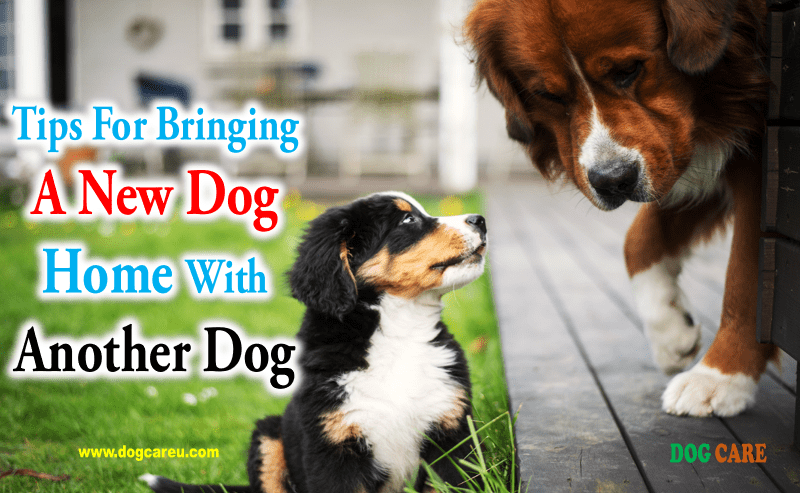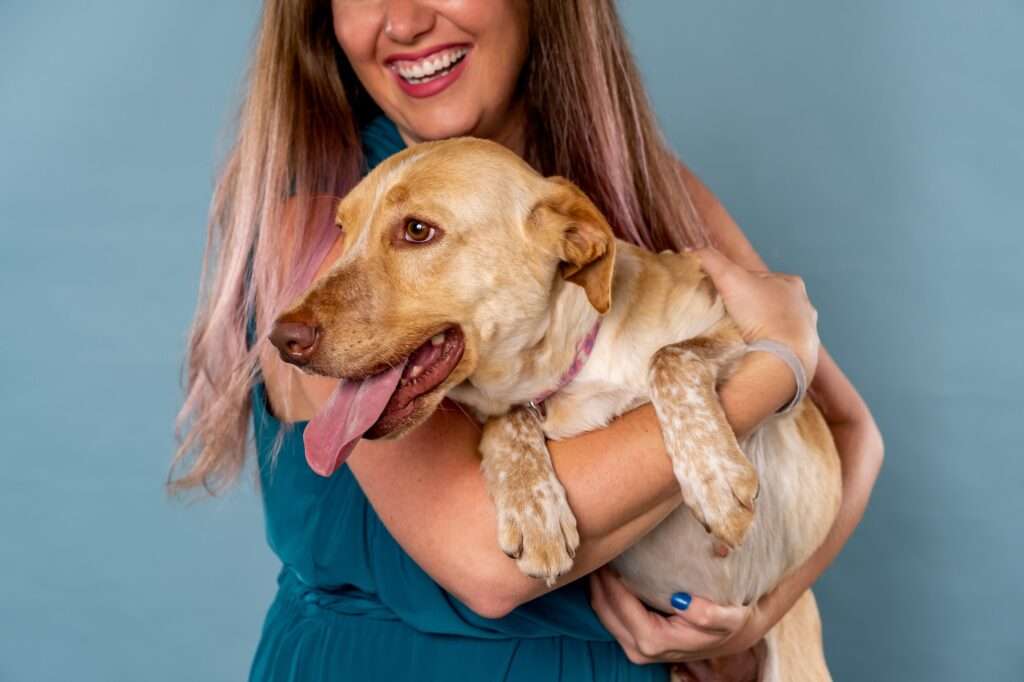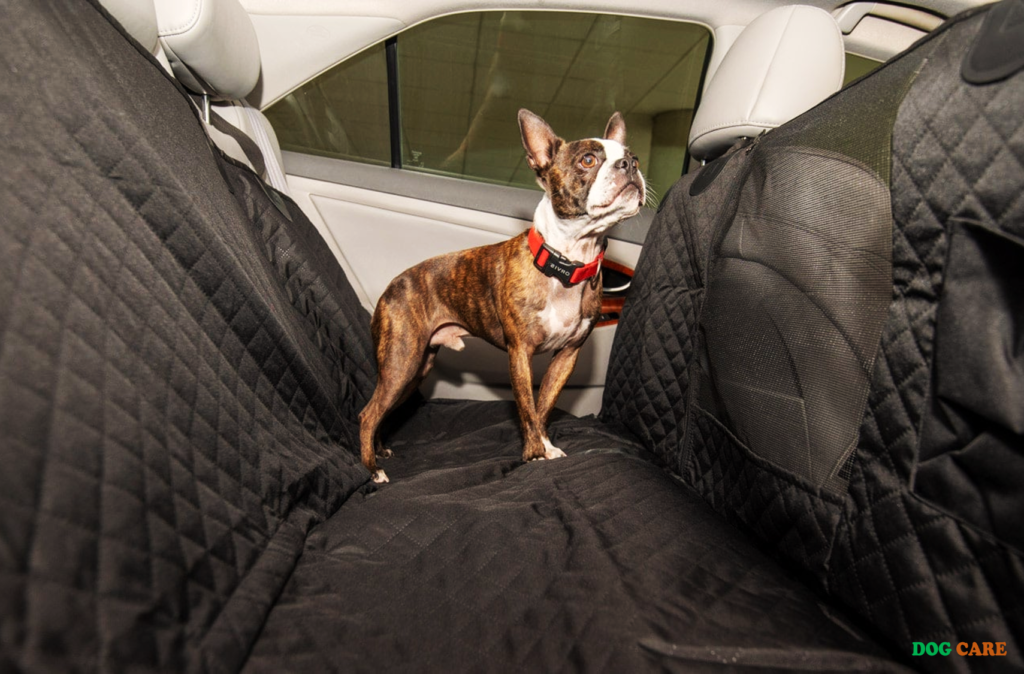Tips For Bringing a new Dog Home with Another Dog? Here are some tips to make the introduction smooth and successful.
Bringing a new dog into your home can be an exciting and rewarding experience. However, introducing a new dog to your existing furry family member can be a delicate situation that requires careful planning and consideration. It is important to take certain steps to ensure a positive and harmonious relationship between your dogs.
We will explore some essential tips for bringing a new dog home with another dog. These tips will help ease the transition, minimize conflicts, and create a loving and supportive environment for all your furry friends. By following these guidelines, you can make the introduction process a seamless and enjoyable experience for both your new dog and your existing pet.

Choosing The Right Dog
Bringing a new dog home with another dog? Here are some tips to ensure a smooth transition. Establish a neutral territory, introduce them gradually, and provide individual attention to prevent jealousy.
Consider Your Current Dogs’ Personalities
When bringing a new dog home, it’s crucial to consider your current dogs’ personalities. Each dog has its own unique temperament and characteristics and may not get along well with just any dog. Assessing your existing dog’s personality can help you determine the right companion that will be compatible with their temperament.
Some dogs are naturally more dominant or independent, while others are more submissive or sociable. If you have a dominant dog, it’s advisable to introduce a more submissive and easy-going dog that won’t clash with their assertive behavior.
Similarly, if you have a sociable and friendly dog, they may be more accepting of a new companion. However, it’s important to ensure that their play styles and energy levels align to avoid any conflicts or misunderstandings.
Matching Energy Levels And Exercise Needs
Matching the energy levels and exercise needs of your existing dog and the new dog is vital for a harmonious household. Some dogs thrive on high-energy activities and require vigorous exercise, while others prefer a more laid-back and relaxed routine. When choosing a new dog, aim to find a canine companion who has a similar activity level to your existing dog, ensuring both canines can engage in compatible playtime and exercise.
It’s essential to consider the breed, age, and size of the dogs as these factors can influence their energy levels and exercise requirements. For instance, a high-energy sporting breed may not be the best fit for a senior dog who prefers gentle walks or a small apartment-dwelling dog.
Keep in mind that a mismatch in energy levels can lead to behavioral issues or frustration for both dogs. A dog with higher energy levels may become bored and engage in destructive behavior, while a dog with lower energy levels may feel overwhelmed or stressed by a more active companion. Strive to strike a balance in energy levels to ensure a happy and healthy coexistence.
Preparing Your Home
Preparing Your Home for the arrival of a new dog is crucial to ensuring a smooth transition and a harmonious environment for both your existing dog and the new addition. By creating a safe and comfortable space and removing tempting and valuable items, you can help reduce stress and set the stage for a successful introduction. Let’s take a closer look at these important steps.
Create A Safe And Comfortable Space
Creating a safe and comfortable space for your new dog is essential in helping them feel secure and adjusting to their new surroundings. Consider the following:
- Designate a quiet area in your home where your new dog can relax and have some alone time. This area should be free from excessive noise and foot traffic.
- Provide a cozy dog bed or crate that will serve as their sanctuary – a place they can retreat to whenever they need privacy or a break from social interactions.
- Ensure the space is free from any potential hazards such as toxic plants, electrical wires, or small objects that can be easily swallowed.
- Set up a water bowl and provide fresh drinking water for your new dog at all times.
Remove Tempting And Valuable Items
When bringing a new dog home with another dog, it’s important to remove any items that may cause conflict or competition between the dogs. Consider the following:
- Put away toys, bones, and treats that are highly valued by your existing dog. This will help avoid any potential territorial disputes or possessive behavior.
- Ensure that food and water bowls are placed in separate locations to prevent resource guarding.
- Remove any valuable or fragile items that could be accidentally knocked over or damaged during the excitement of the dogs’ initial interactions.
- If introducing a new dog to a household with cats or other small pets, create a safe space for the smaller animals where they can retreat and feel protected.
By taking these simple steps to prepare your home, you can help create a welcoming environment for your new dog and ensure a smooth integration with your existing furry family member. Remember, patience and positive reinforcement are key during this adjustment period. Now that your home is ready, it’s time to focus on introducing the dogs to each other, which we’ll cover in our next section.
Introducing Through Scent
Introducing a new dog to your home alongside another dog can be a delicate process. Get essential tips for a smooth transition and help your furry friends bond through scent.
Exchange Bedding And Toys
When bringing a new dog home with another dog, it’s important to introduce them gradually. One effective method is to exchange bedding and toys between the two dogs. This allows them to become familiar with each other’s scents in a non-confrontational way.
By exchanging bedding, you are indirectly introducing the new dog’s scent to your existing dog and vice versa. This can help them feel more comfortable around each other and establish a sense of familiarity. Place the bedding in areas where they spend time, such as their sleeping spots or favorite corners of the house. Similarly, swapping toys can help facilitate a positive association between the dogs. As dogs rely heavily on their sense of smell, letting them explore and sniff each other’s toys can help them get to know each other’s scent without direct interaction.
Remember to supervise their initial interactions and avoid any potential conflicts or resource guarding. Providing separate spaces for each dog and gradually increasing their time together can help prevent any potential territorial behavior. While this method introduces the dogs through scent, it’s important to note that it is just one step in the introduction process. Be patient and allow the dogs to adjust at their own pace.
Allow Sniffing At A Distance
Another effective way to introduce a new dog to an existing dog is by allowing them to sniff each other from a distance. This can help them gather important information about each other without direct contact, minimizing the chances of any potential tension. Before coming face-to-face, let the dogs sniff each other through a closed door or a baby gate.
This allows them to become familiar with each other’s scents and gauge their reactions in a safe environment. To further facilitate the process, consider using treats or toys to distract them and create positive associations with each other’s presence. This can help to reduce any anxiety or stress they may experience during the introduction. As they become more comfortable, you can gradually decrease the distance between the dogs while observing their behavior for any signs of tension or aggression.
Remember to proceed at a pace that both dogs are comfortable with and always prioritize their safety. By introducing dogs through scent and allowing them to sniff at a distance, you can help create a positive foundation for their future interactions. Patience, consistency, and positive reinforcement are key to a successful introduction process.
Supervised Meet-and-greets
Introducing a new dog to your home can be an exciting but challenging time, especially if you already have another dog. One of the most crucial steps in this process is the supervised meet-and-greet. This controlled introduction helps the dogs establish a positive and harmonious relationship from the start. By following some guidelines, such as introducing them in neutral territory and keeping them on leash, you can set the stage for a successful integration. Let’s take a more in-depth look at how to conduct a supervised meet-and-greet when bringing a new dog home with another dog.
Neutral Territory
When introducing two dogs, it’s essential to start the process in neutral territory, such as a local park or a friend’s yard. This neutral ground helps eliminate any territorial behavior from either dog and encourages a more neutral and balanced interaction.
By meeting in a neutral location, you create an environment where neither dog feels the need to defend their home territory, reducing the potential for conflict. This neutral ground allows the dogs to focus on getting to know each other without feeling threatened.
On-leash Introductions
During the initial meet-and-greet, it’s crucial to keep both dogs on leash. This precaution ensures you have full control over the situation and can step in if any issues arise. Leashes also prevent any unexpected confrontations and allow you to redirect the dogs’ attention if necessary.
Make sure the leashes are loose but still have a firm grip. Keep a close eye on the dogs’ body language, watching for signs of tension or discomfort. If either dog starts to display aggression or signs of fear, it’s crucial to take a step back and reassess the situation.
While on leash, encourage the dogs to interact calmly and positively. Allow them to sniff each other and observe their body language for signs of relaxation. If they remain calm and show interest in each other, you can gradually allow them more freedom of movement, still keeping them on leash for safety.
Remember, the key is to give them time to adjust to each other’s presence while maintaining control of the situation.
Bringing a new dog into your home is an amazing experience but can be overwhelming for both dogs involved. Implementing supervised meet-and-greets that take place in neutral territory and utilize leashes can greatly contribute to a smooth and successful integration. By following these steps, you can foster positive interactions and establish a solid foundation for your dogs’ relationship, paving the way for a happy and harmonious home.
Building Positive Associations
Bringing a new dog home can be an exciting time for both the new addition to your family and your existing dog. However, introducing a new dog to your home can also be a stressful experience for both animals involved. That’s why it’s crucial to focus on building positive associations between the dogs right from the start. This will help ensure a harmonious transition and create a bond between them. There are a few key techniques you can use to achieve this, including rewarding good behavior and gradually increasing interaction.
Reward Good Behavior
When you bring a new dog home, it’s essential to reinforce positive behavior and create a welcoming environment for both dogs. Rewarding good behavior is an effective way to support the development of positive associations. Use treats, praise, and affection to show your appreciation whenever your dogs exhibit behaviors that you want to encourage, such as calmness, cooperation, and friendly interactions. By consistently rewarding good behavior, you’ll reinforce positive experiences and help your dogs associate each other’s presence with pleasant outcomes.
Gradual Increase In Interaction
It’s important to introduce your new dog to your existing dog slowly and gradually. Abrupt introductions can lead to tension, anxiety, or even aggression. Start by allowing the dogs to sniff each other’s scent through a closed door or a baby gate. This will help them become familiar with each other’s presence without the potential for actual encounters.
As both dogs become more comfortable with each other’s scent, gradually increase their exposure to one another in controlled settings. Over time, you can allow them to meet face to face in a neutral territory, such as a park, while keeping them both on a leash. This gradual approach helps the dogs feel secure and reduces the likelihood of negative associations during their initial interactions.
Remember, building positive associations between your new dog and your existing dog is a process that can take some time. Patience, consistency, and positive reinforcement are key. By rewarding good behavior and gradually increasing their interactions, you can foster a positive environment for both dogs, helping them establish a strong bond and enabling them to become lifelong companions.
Frequently Asked Questions Of Tips For Bringing A New Dog Home With Another Dog
How Should I Introduce My New Dog To My Existing Dog?
Introduce the dogs in a neutral territory, use leashes, and allow them to sniff each other. Monitor their interactions and reward positive behavior. Gradually increase their time together and supervise their activities until they are comfortable with each other.
What Can I Do To Prevent Jealousy Between My Dogs?
Give each dog individual attention, including separate walks and playtime. Avoid favoritism and provide equal access to resources such as toys and treats. Also, establish a consistent routine and set boundaries to promote harmony between your dogs.
How Long Does It Take For Dogs To Adjust To Each Other?
The process varies, but it can take several weeks or even months for dogs to fully adjust to each other. Be patient and allow them to establish their own hierarchy and bond at their own pace. Consistency and positive reinforcement are key to a smooth transition.
Conclusion
Bringing a new dog home with another dog can be an exciting but challenging experience. By following these tips, you can create a smooth transition for both your existing pet and the new addition. Proper introductions, patience, separate spaces, regular training, and monitoring their interactions are key to a harmonious household.
Remember, every dog is unique, and it may take time for them to adjust. With love, understanding, and consistency, you can set the stage for a lifelong bond between your furry friends.


